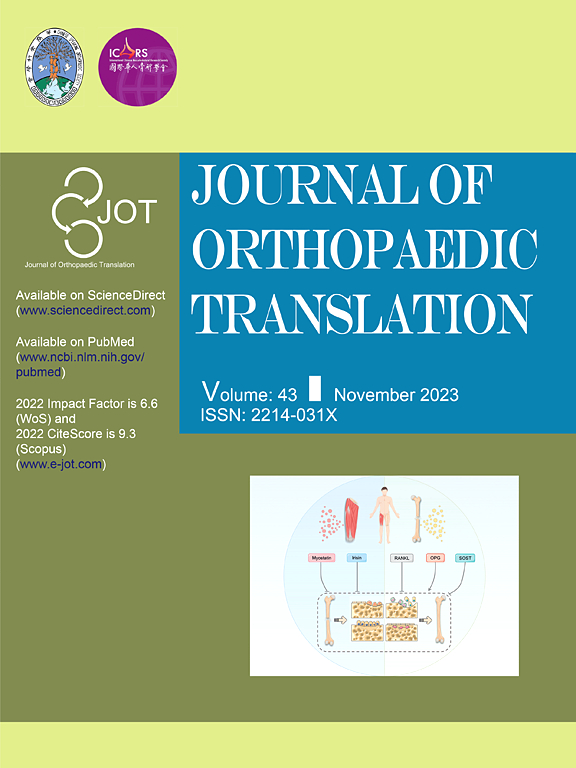Risk-stratified lifetime risk and incidence of hip fracture and falls in middle-aged and elderly Chinese population: The China health and retirement longitudinal study
IF 5.9
1区 医学
Q1 ORTHOPEDICS
引用次数: 0
Abstract
Background
Hip fracture (HF) is one of the most prevalent orthopedic conditions among the elderly, with falls being the primary risk factor for HF. With the surge of aged population, China is facing great challenges from HF and falls. However, a comprehensive long-term observation of risk factors affecting HF and falls and their association are little reported at a national level.
Methods
The longitudinal cohort was established using the China Health and Retirement Longitudinal Study (CHARLS) data from 2011 to 2018. The incidence density and multi-risk-stratified lifetime risk (up to 90 years of age) of falls and HF were studied at index ages of 50, 60, and 70, as well as the lifetime risk stratified by six regions in China, based on the modified Kaplan–Meier method with Statistical Analysis System (SAS).
Results
This study identified 17 705 subjects aged 50–89. The incidence density of falls was 65.07 and 47.53 per 1000 person-years in women and men, respectively. The incidence density of HF was also higher in women at 5.58 per 1000 person-years than in men at 4.88. By age 50, the lifetime risk of experiencing a HF was 18.58 % for women and 13.72 % for men. Vision and hearing abilities were significantly related to the lifetime risk of both falls and HF. Obesity-related factors presented age-relevant relationships with lifelong risks. Lack of naps, poor lower limb strength, and physical capabilities were indicative of HF risk. The north-western region of China had the lowest lifetime risk of falls but highest risk of HF, while other regions showed a consistent trend between falls and HF.
Conclusion
The aging population worldwide faces a considerable risk of falls and HF. Several risk factors were identified in this study using a Chinese population, relating to disease history, lifestyle habits, health status and physical function, and the risks differed among six regions in China. Future precautionary management programs, as well as patient self-awareness are necessary for improving the prevention of falls and HF to reduce their incidence in the aging population.
The translational potential of this article
With the greatest aged population worldwide, China faces the unparalleled challenge on public health. The study poses the lifetime risk of hip fracture and falls stratified by multiple risk factors in people from 45 to 90 in a national scale, which would shed a light on the early and continuous prevention of such injury.

求助全文
约1分钟内获得全文
求助全文
来源期刊

Journal of Orthopaedic Translation
Medicine-Orthopedics and Sports Medicine
CiteScore
11.80
自引率
13.60%
发文量
91
审稿时长
29 days
期刊介绍:
The Journal of Orthopaedic Translation (JOT) is the official peer-reviewed, open access journal of the Chinese Speaking Orthopaedic Society (CSOS) and the International Chinese Musculoskeletal Research Society (ICMRS). It is published quarterly, in January, April, July and October, by Elsevier.
 求助内容:
求助内容: 应助结果提醒方式:
应助结果提醒方式:


